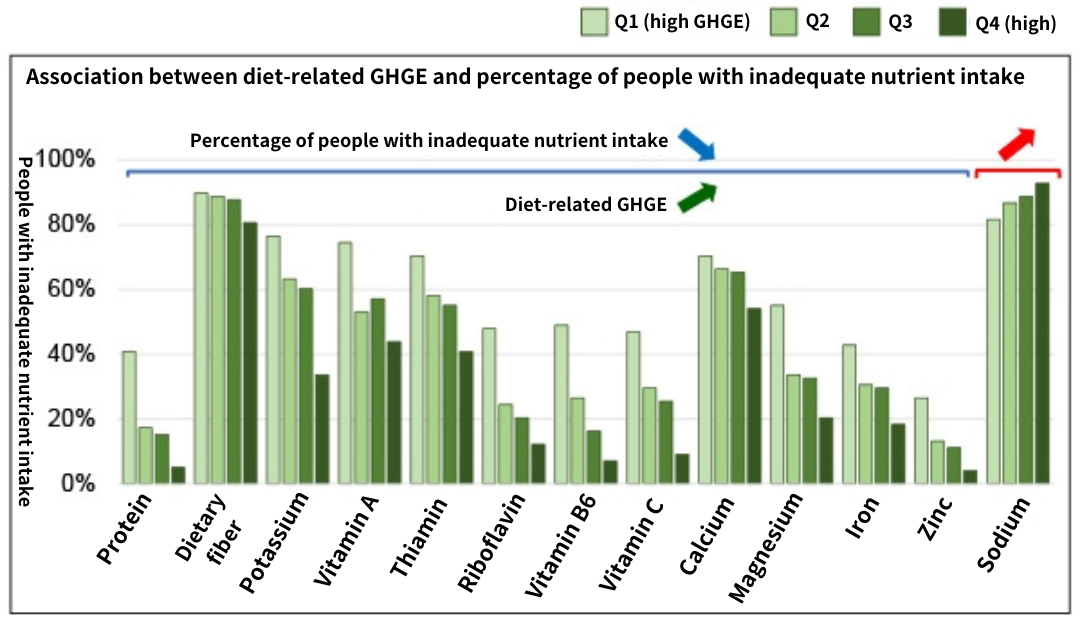UTokyo researchers answer questions on 21 GX (Green Transformation) topics from their specialist viewpoints. Through questions that cannot simply be brushed off as someone else’s concerns, take a peek into GX and our world of research.
Q12. Is it true that the Japanese diet has a high carbon footprint?
The Japanese diet is reputed to be healthier and more environmentally friendly than Western diets, but is it really?Answered by Minami Sugimoto
Project Assistant Professor, Institute for Future Initiatives
Nutritional Epidemiology

Healthy eating does not equate to environmental friendliness

Since the definition of the Japanese diet (washoku) can be complicated, here, we consider washoku to be the usual diet of modern Japanese people. Greenhouse gas emissions (GHGE) associated with the Japanese diet are similar to those of Western diets. Then, if we look in more detail at this washoku, we find that diets associated with high GHGE actually tend to be the healthier ones. This result contrasts with research in the West showing that diets with higher nutritional value produce lower GHGE.
This divergence is thought to be due to a difference in eating habits between Japan and Western countries. Unhealthy diets in Western countries tend to include a lot of energy-dense foods and animal-based foods, such as meat, which are unfriendly to the environment. In contrast, the unhealthy part of a Japanese diet consists of carbohydrate-rich foods such as rice, noodles and bread. Eating these items in moderation and balanced with vegetables, meat and fish results in a healthier diet, but also increases the burden on the environment.
According to the Food and Agriculture Organization of the United Nations (FAO), one third of the world’s GHGE comes from the production and distribution of food. As well as reducing GHGE during food production, we need to change our eating habits to prevent global warming. How then can we adjust to an environmentally friendlier, healthier and cost-conscious diet, without making major changes to our traditional eating habits?
A detailed analysis of the dietary data among nearly 400 Japanese adults revealed what dietary changes are needed. First, whole grain intake needs to be increased, ideally by three to five times. This could be possible by taking actions such as mixing some brown rice into white rice or switching to whole-grain bread. The Japanese should also reduce their consumption of beef and pork by 20% to 30%, since the production of beef and pork requires a lot of resources such as feed, land and water. In addition, cutting down on salt is essential because a high-sodium diet is the biggest cause of death associated with the Japanese diet. Our research showed an optimized diet can result in a 10% reduction in GHGE.
My major is nutritional epidemiology, which provides data about diet-disease relationships. An interesting part of nutritional epidemiology is that it covers a wide range of research topics related to everyday life. I have recently been looking into how to choose and buy food that is good for both the environment and our health. For instance, I would like to develop a system that analyzes one month’s worth of receipts for purchased food and assigns points based on the environmental and health impacts of each item, while also providing advice on how to improve future purchases.
* This article was originally printed in Tansei 46 (Japanese language only). All information in this article is as of March 2023.







